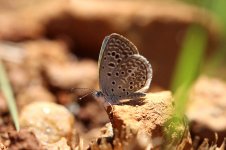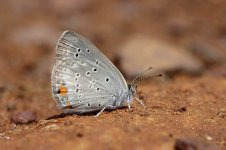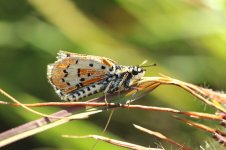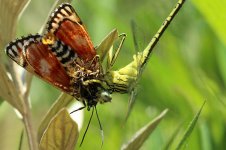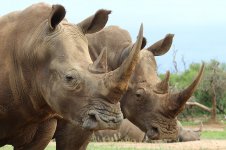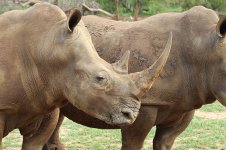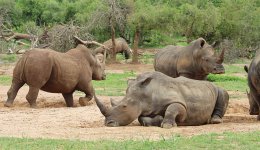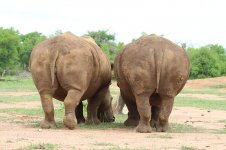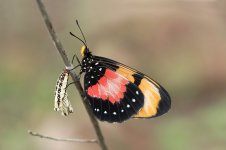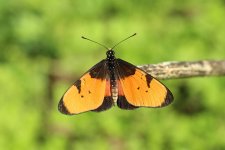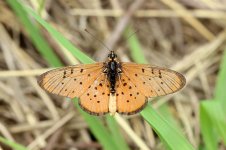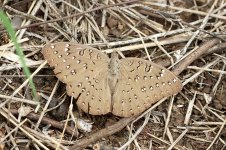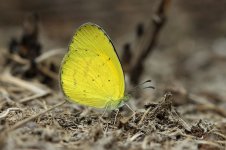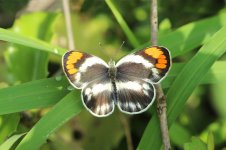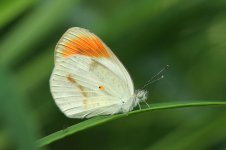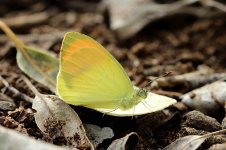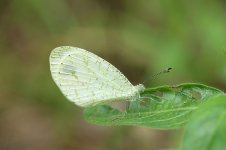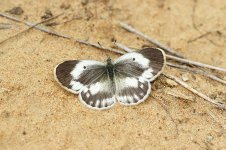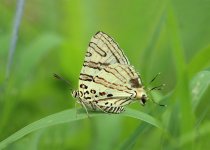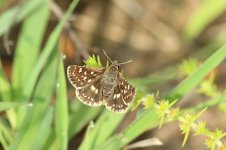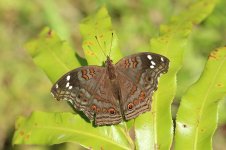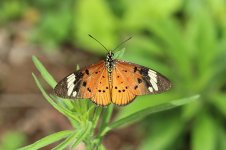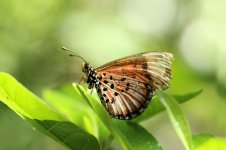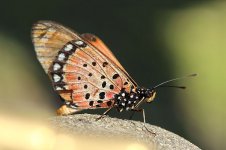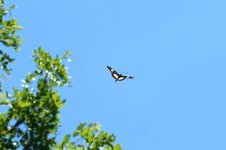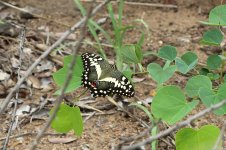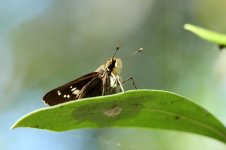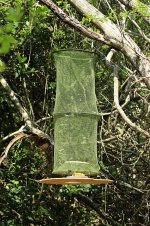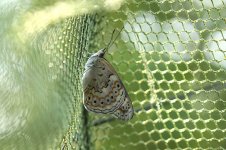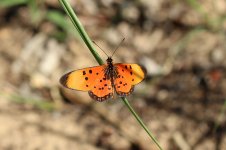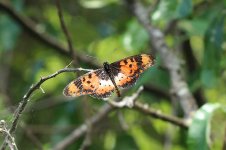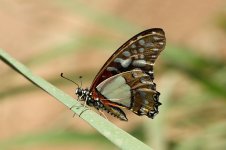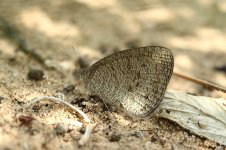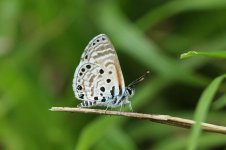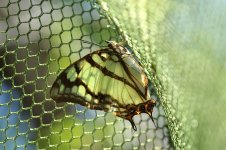
[B]13 December. Malalotja & Hlane, Swaziland.[/B]
After a night of impressive lightning storms, the day dawned to a blanket of thick fog. As it cleared a little, Greater Striped Swallows and White-necked Ravens around the chalets, then several Buff-streaked Chats and a Cape Rock Thrush on the surrounding slopes, also both Cape Longclaws and Yellow-throated Longclaws, Broad-tailed Warbler and Yellow-tufted Pipit. Walked across to a pool to check gathering swallows, flushed two Black-rumped Buttonquails in the process. At the pool, Black Saw-wing and White-throated Swallows among the more common species, plus plenty of widowbirds – Fan-tailed Widowbirds and Red-collared Widowbirds most common, White-winged Widowbirds also moderately common. No Blue Swallow.
All a bit damp and drab though, Blesboks plodding through the murk, Grey Rhebok and Burchell's Zebras looking bedraggled. Turned to rain by 9.00 a.m., I predicted a total write-off for butterflies and decided to leave Malalotja and head to the eastern lowlands of Swaziland. But then I got the car stuck on a steep slope, the rain turning the red soil into a slippery sludge and the car simply sliding all over the place! Chucking tons of grass on the slope, took a good 30 minutes to nurse the car up a mere 100 metres of track. And by the time I was finally clear of the treacherous slope, a great slab of blue sky was appearing in the southern and western skies – time for change of plans again!
And so it was, Malalotja was soon sitting in glorious sunshine, the slopes almost immediately warm and dry. The search for butterflies was back on – as day before, numbers proved quite low, but still nine species in the next couple of hours, including my only Long-winged Acraea of the trip, plus another Harlequin Skipper, another Gaudy Commodore and, all taking salts from soil next to a stream, Marsh Blue, Common Meadow Blue and a single Rayed Blue.
Left Malalotja at midday and drove across the country to Hlane, a reserve set in think bush savannah not far from the Mozambique border. Arriving quite late in the day, a Yellow Pansy, a Sulphur Orange Tip and a female Red Tip were the only butterflies seen, but not bad for other wildlife - loads of Nyalas and other antelopes, plus abundant birds including a colony of nesting Marabou Storks, several Crested Guineafowls, two Green Woodhoopoes, a couple of Bennett's Woodpeckers, quite a number of Violet-backed Starlings, an Eastern Bearded Scrub-Robin and quite a bit more.
Camped at this locality, a Lion roaring from dusk pretty much through the night, a second on occasion ...most evocative.
After a night of impressive lightning storms, the day dawned to a blanket of thick fog. As it cleared a little, Greater Striped Swallows and White-necked Ravens around the chalets, then several Buff-streaked Chats and a Cape Rock Thrush on the surrounding slopes, also both Cape Longclaws and Yellow-throated Longclaws, Broad-tailed Warbler and Yellow-tufted Pipit. Walked across to a pool to check gathering swallows, flushed two Black-rumped Buttonquails in the process. At the pool, Black Saw-wing and White-throated Swallows among the more common species, plus plenty of widowbirds – Fan-tailed Widowbirds and Red-collared Widowbirds most common, White-winged Widowbirds also moderately common. No Blue Swallow.
All a bit damp and drab though, Blesboks plodding through the murk, Grey Rhebok and Burchell's Zebras looking bedraggled. Turned to rain by 9.00 a.m., I predicted a total write-off for butterflies and decided to leave Malalotja and head to the eastern lowlands of Swaziland. But then I got the car stuck on a steep slope, the rain turning the red soil into a slippery sludge and the car simply sliding all over the place! Chucking tons of grass on the slope, took a good 30 minutes to nurse the car up a mere 100 metres of track. And by the time I was finally clear of the treacherous slope, a great slab of blue sky was appearing in the southern and western skies – time for change of plans again!
And so it was, Malalotja was soon sitting in glorious sunshine, the slopes almost immediately warm and dry. The search for butterflies was back on – as day before, numbers proved quite low, but still nine species in the next couple of hours, including my only Long-winged Acraea of the trip, plus another Harlequin Skipper, another Gaudy Commodore and, all taking salts from soil next to a stream, Marsh Blue, Common Meadow Blue and a single Rayed Blue.
Left Malalotja at midday and drove across the country to Hlane, a reserve set in think bush savannah not far from the Mozambique border. Arriving quite late in the day, a Yellow Pansy, a Sulphur Orange Tip and a female Red Tip were the only butterflies seen, but not bad for other wildlife - loads of Nyalas and other antelopes, plus abundant birds including a colony of nesting Marabou Storks, several Crested Guineafowls, two Green Woodhoopoes, a couple of Bennett's Woodpeckers, quite a number of Violet-backed Starlings, an Eastern Bearded Scrub-Robin and quite a bit more.
Camped at this locality, a Lion roaring from dusk pretty much through the night, a second on occasion ...most evocative.





